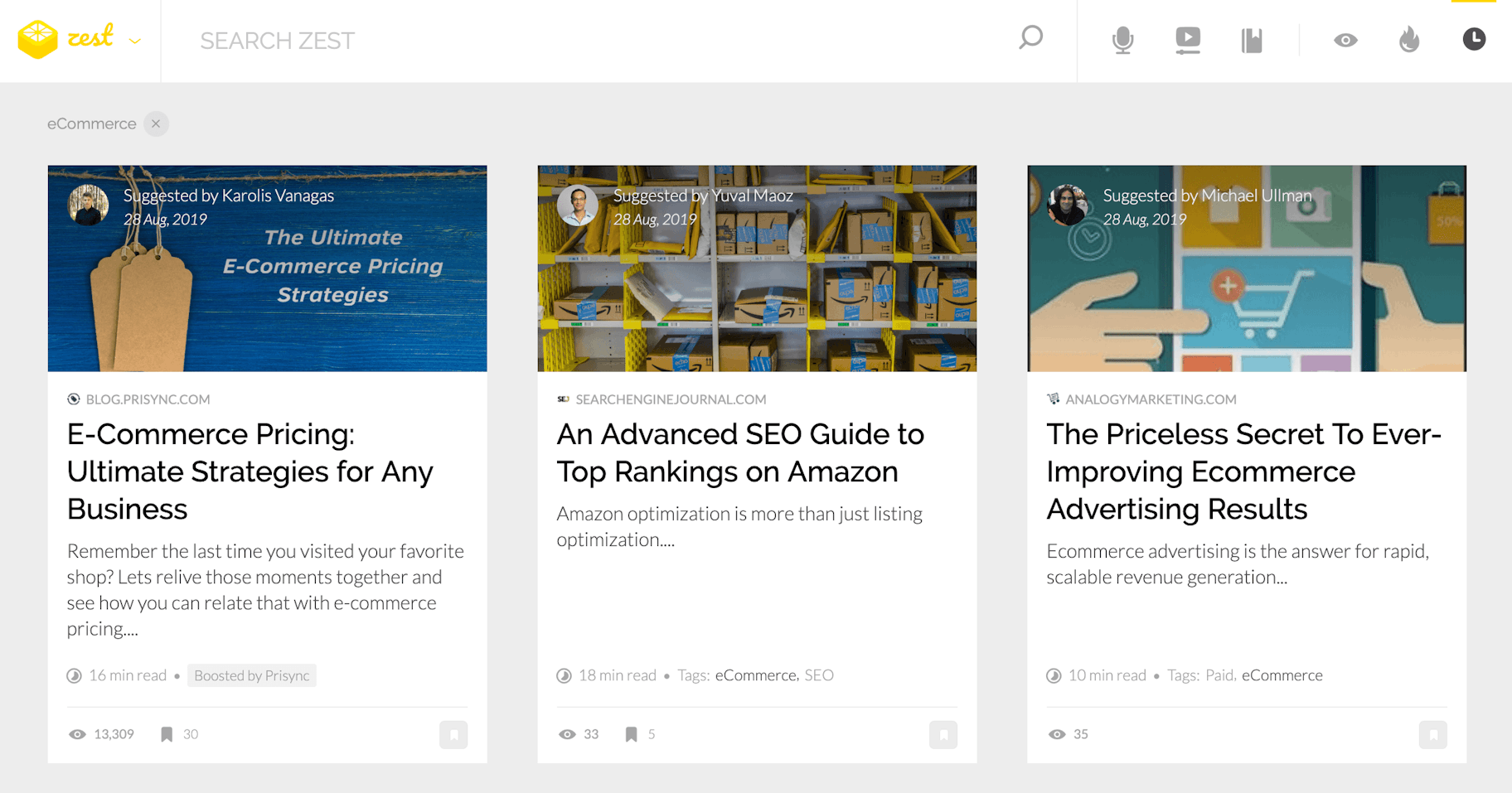Content curation can save your business a ton of money as creating your own content all the time can be costly. The cost of hiring freelancers or in-house content creators can quickly add up. That doesn’t mean content creation isn’t important. It is. It’s just that you can also effectively curate content for your audience.



What Is Content Curation?
Content curation is when you share content created by others. This can include sourcing another brand as the creator of an infographic you include in one of your blog posts or sharing another brand’s blog post on social media.
Only 5% of brands admit to not doing this, showing that content curation is a really common marketing practice. Why are brands curating content? Over 50% of marketers have said that it has increased their brand’s visibility, web traffic and more.
→ Click Here to Launch Your Online Business with Shopify
Content Curation Examples
1. Fetch
Online retailer Fetch curates content on its social media pages. On their Instagram account, they’ll share other people’s pet photos. With curated content they were able to grow their audience size to over 6,500 followers on Instagram. The curated content is mixed with their own custom images to add some diversity to the mix. Curated content allows you to post more content frequently. If you post a few times a day you can skyrocket into the tens or hundreds of thousands, especially in the pet niche.
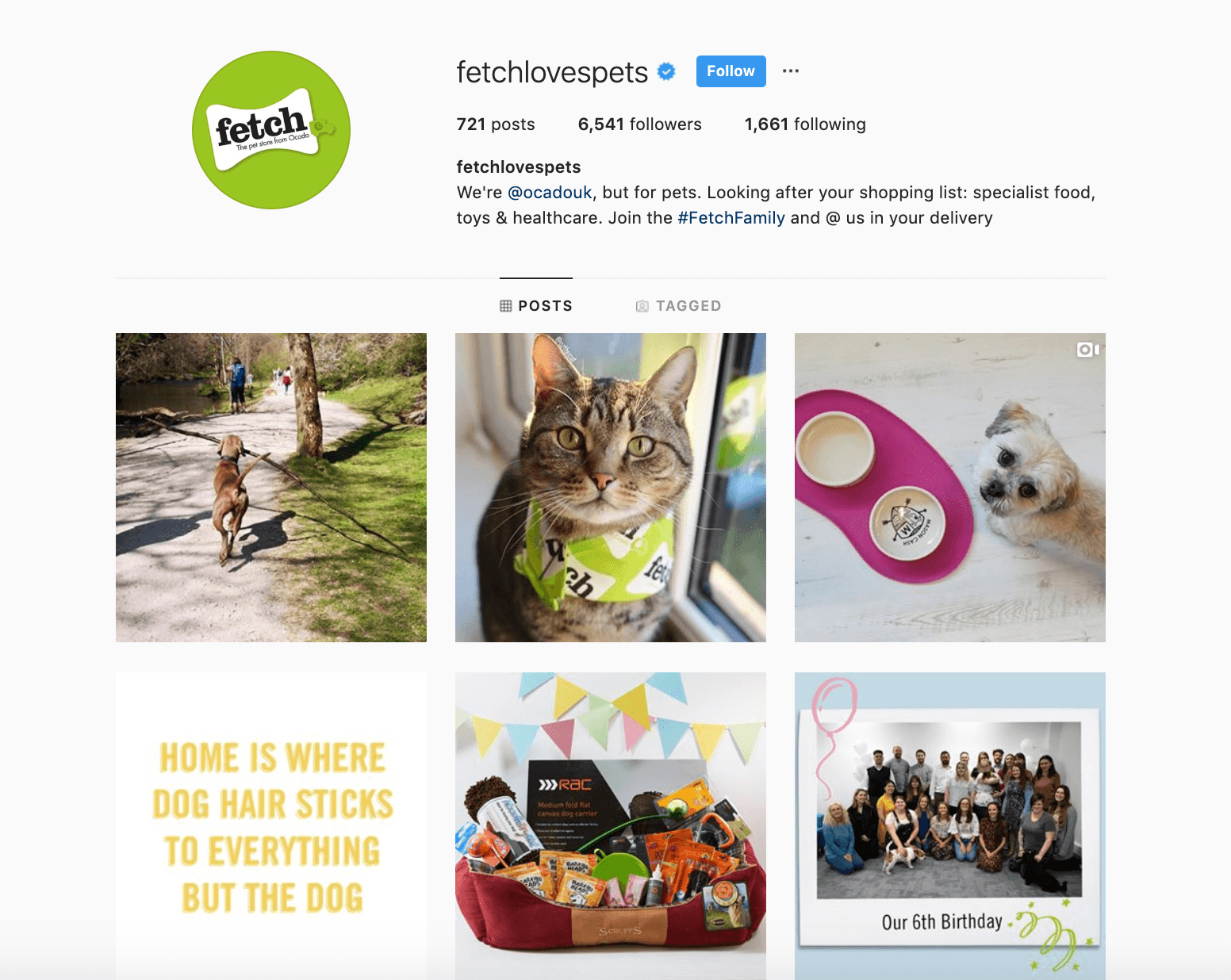
2. Homesense
Homesense, a popular Canadian home decor brand, curates content on their Pinterest account. On Pinterest, every pinner is expected to curate content as sharing your own content alone can result in an account suspension for spam. Brands like Homesense curate content that matches their branding. The posts you see in the picture below have a mix of their own content and curated content. However, the style of posts all seem similar to one another making it a great content curation example to emulate.
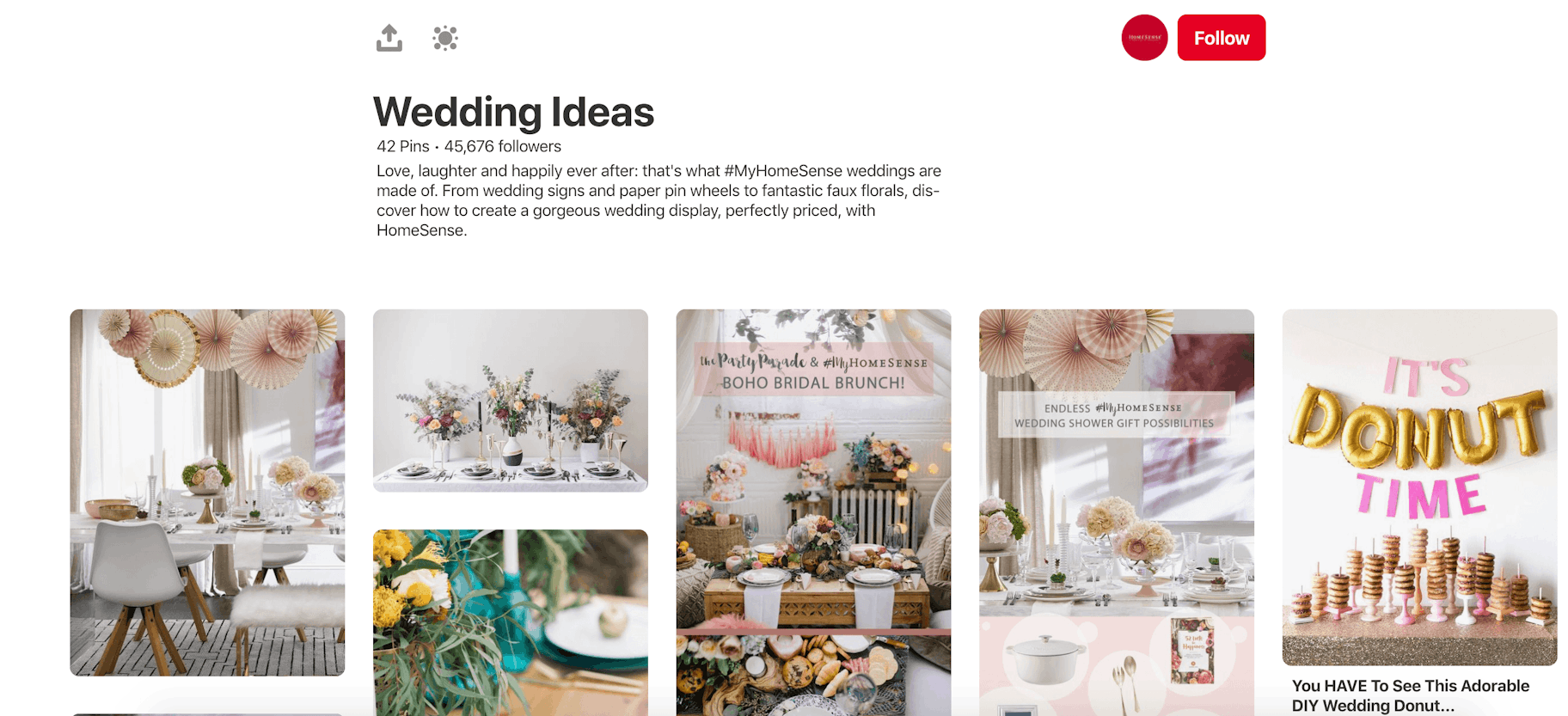
3. Sujan Patel
Entrepreneur Sujan Patel is an example of a Twitter user who curates content for his feed. He uses content curation tools like Quuu to find and schedule content. You’ll find a mix of relevant articles about marketing, SEO, and business on his feed from various brands. As he runs his own businesses as well, he shares blog content from his own companies as well. However, he supplements with curated content to ensure his feed is always active with fresh content.

10 Content Curation Tips
1. Curate Funny Videos and Pictures
On my personal brand’s Facebook page, most of our content is curated. We share funny videos and pictures about our niche. We grew our Facebook page to have over 50,000 fans using this strategy. The reality is when we created our own content it performed well. But it doesn’t perform nearly as well as sharing someone else’s content. Some people make great content that we’re happy to share. We always credit the brand linking out to their page, even if they’re within the same niche. It hasn’t hurt our sales one bit and it’s definitely helped them. Content curation actually helped grow our sales too.
2. Create and Curate Content
Have a blend of your own content and curated content. No one wants to see sales pitches every time they go on social media. That’s the fastest way to get unfollowed. So have fun with your brand. Share some positive videos, motivational quotes or other cool content that would be relatable for your niche. When you do post your own products customers will likely not be annoyed by it.
3. Curate Content for Your Specific Audience
Know your audience. Is your niche more likely to prefer entertaining videos or thoughtful blog content? If you regularly share blog content and it gets low engagement, that’s a sign that you should probably try something different. From my experience with marketing on Instagram and Facebook, video usually drives the highest number of followers and engagement such as shares, likes and comments. So when executing your content curation strategy be sure to include videos.
4. Don’t Curate Offensive Content
Don’t offend your audience. There’s no shortage of content you can curate. Be mindful of what you’re sharing. You might think you’re sharing an article from an inspirational person in your niche. However, if you’re new to the niche, you might not know that the person isn’t respected in the industry. This may upset your audience. Avoid posting content that makes fun of certain types of people as it can turn some people off. Be sure to train your freelancers and employees about acceptable content curation practices in your niche to ensure this rule is followed.
5. Monitor Your Competition’s Content
Monitor your competition. What type of content do they share that works well? Aim to share the same type of content. If they’re regularly posting uplifting content, focus on trying it out with your brand. Don’t just share the same content they do as people will notice and it won’t work out favorably for you. Share a similar style but different content.
6. Have a Mix of Content
Mix up your posts. It can be overwhelming to scroll through a feed and only see videos. Not everyone wants to watch a video all the time. Have some quote pictures, some funny pictures, videos, blog content, customer photos and more. Your social media should be balanced with different types of content.
7. Give a Bit of a Teaser
Add your two cents. When sharing other brand’s content, you’ll want to explain why you’re sharing this. You shouldn’t say something like ‘I’m sharing this because..’ Instead, ask a question to your audience or mention why it’s great. For example you can write something like, ‘Check out this yoga article. Can you do the 11th pose?’
8. Be on Brand
Stay focused. Having a consistent style for your content is a great way to build your audience. Stick to content that’ll be appreciated and enjoyed by your audience. If you share a mud race graphic for your meditation bracelet store, it’s not necessarily the right audience for that. By being consistent with your type of content, customers will be more likely to stay a fan of your page over the long haul.
9. Mix Up The Brands Whose Content You Share
Don’t always share content from the same brands. Mix it up. Different brands create different content. If you constantly share the same brand’s content, you’ll find that more people will start to follow that brand instead of you. By mixing it up you become a content curator. Finding the best content for your customers.
10. Schedule Your Content
Schedule your content. Automating your content curation can be an easy way to keep your social media pages active without you having to add content constantly. Using a tool like Buffer you can add up to 10 posts at a time, per social platform for free. This allows you to group your marketing activities together to give you more time to work on driving your sales growth.
Content Curation Experts


Content Curation Tools
1. Sniply
Snip.ly is a content curation tool that allows you to add your own message and link to the content you curate. For example, if you share someone’s blog post, there will be a popup on the screen where you can drive traffic back to your blog or store. This allows your brand to stay at top of mind while your followers to browse other websites you share.
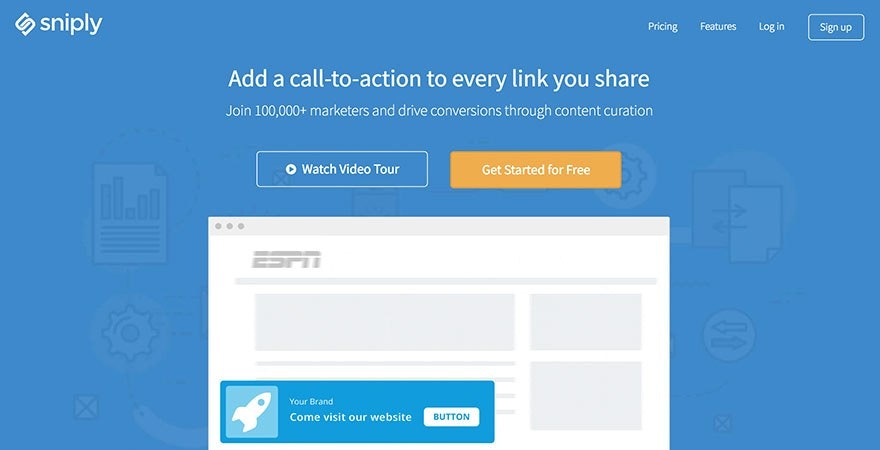
2. Tailwind
Tailwind is a content curation tool for Pinterest users. On the platform, you can join tribes where other bloggers share their content that you’ll be able to repin. You can also share your own content so that other bloggers can curate content that you’ve created.

3. Zest
Zest is another content curation tool for marketers who are looking for content to curate. You’ll find a ton of articles on topics such as social media, marketing, business, and other B2B topics. The team manually reads each article to ensure that the quality of the content is high so you know you’re always curating great content.
4. Feedly
Feedly is one of those content curation tools where you can save articles to read later. This is great for those browsing several websites at once to choose from at the time of curation. The tool even organizes your curated content into sections.
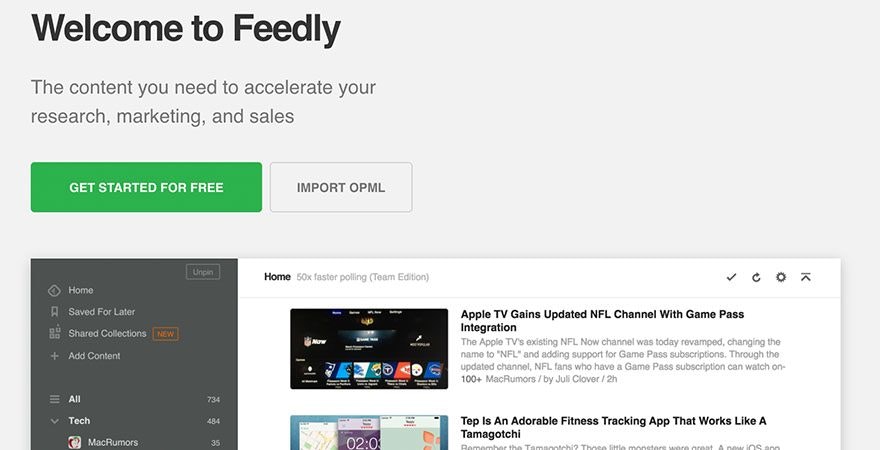
4. Pocket
Pocket is another content curation tool where you can view content later. Once you’ve selected several articles you want to read, all you need to do is add it to Pocket and it’ll be saved for you.
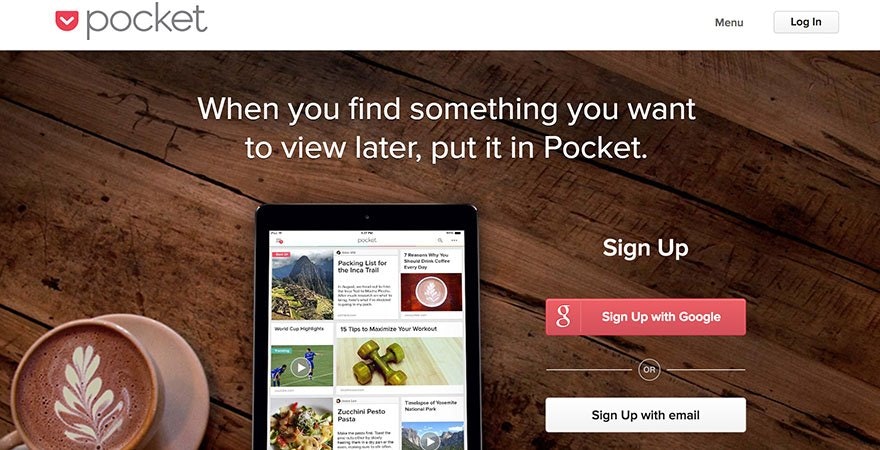
5. Twitter Lists
Twitter Lists are a great content curation tool if you know who to follow. You can follow top influencers within your niche and add them to a list. If they regularly share content, you can source your content from those followers. Then, you can share those posts on your own social media by retweeting them or adding them to Buffer if you plan on sharing them on other social platforms as well.
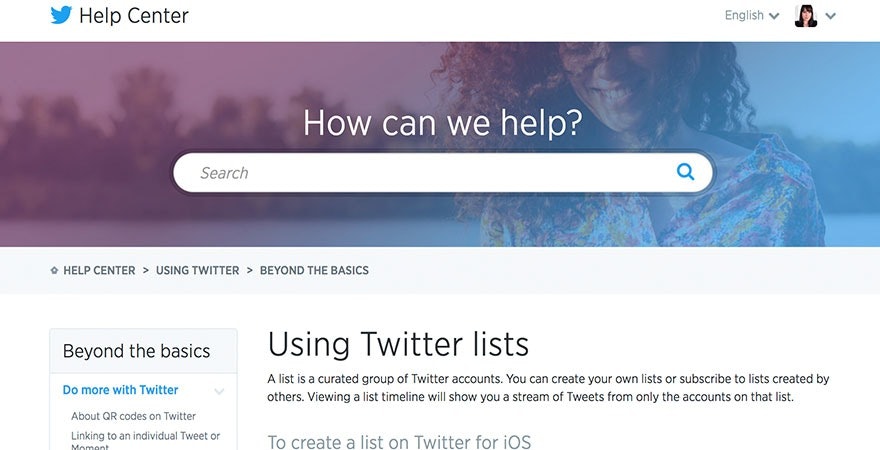
6. Buzzsumo
Buzzsumo can be a great content curation tool. You’ll be able to search by keyword or website to find the most popular content with the most shares. You can choose the most shared articles to add to your own social media to build out your pages.

7. Quuu
Quuu is one of the most popular content curation tools. You can use it to both find content to curate and to share your own content. The content integrates with social media automation tools to allow influencers and brands to share your content with their followers. You can also be the brand or influencer who uses Quuu to curate content for your own social channels.




Conclusion
Content curation is a great way to fill up your social media feeds and supplement your own content. Top brands curate content regularly to ensure their social channels stay active. There are several content curation tools where you can find great content to share and where you can promote your own content to be curated. If you own a small business, content curation can be a cost-effective strategy that allows you to scale your business, grow your followers, and generate sales.


